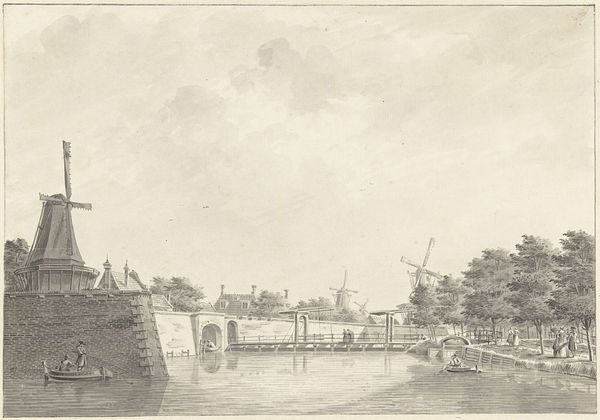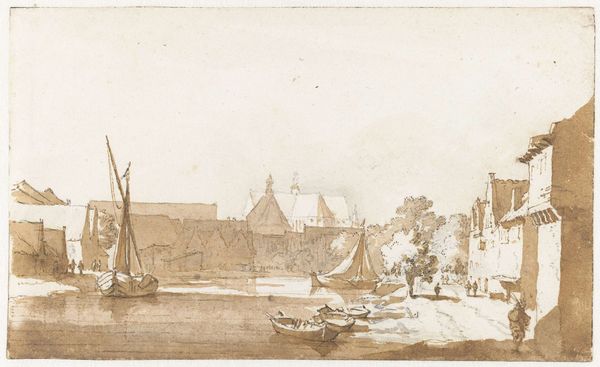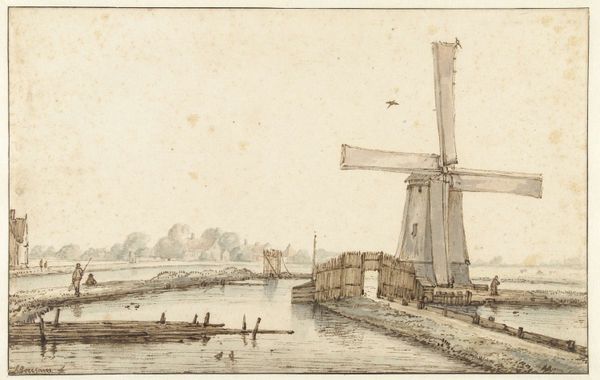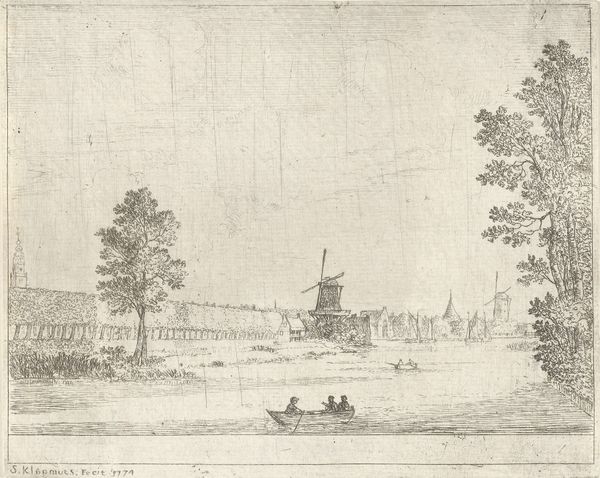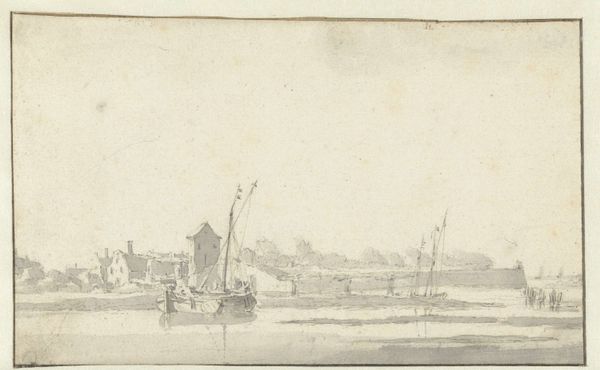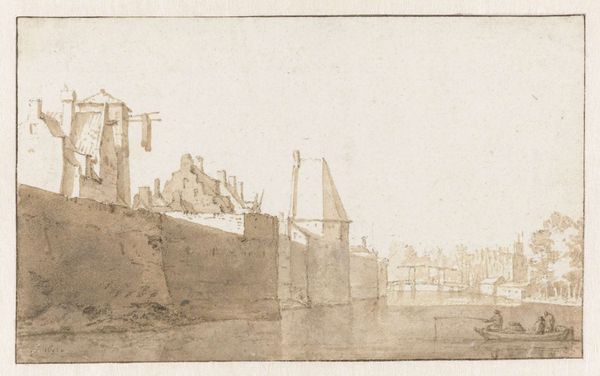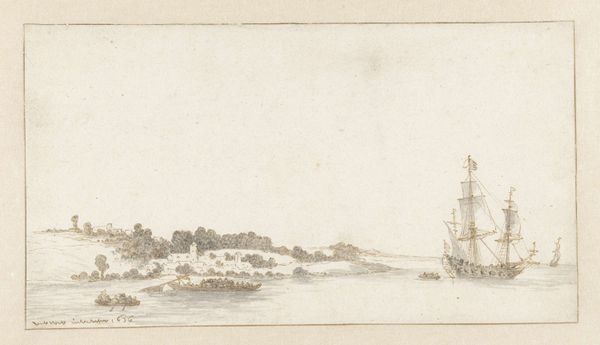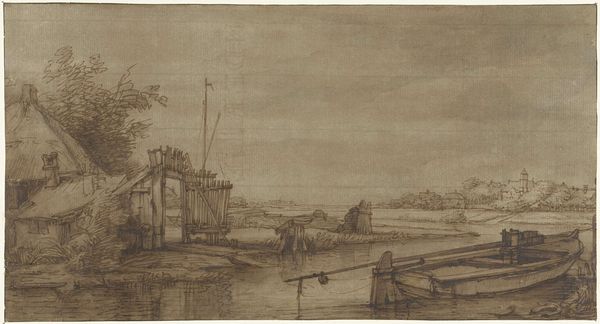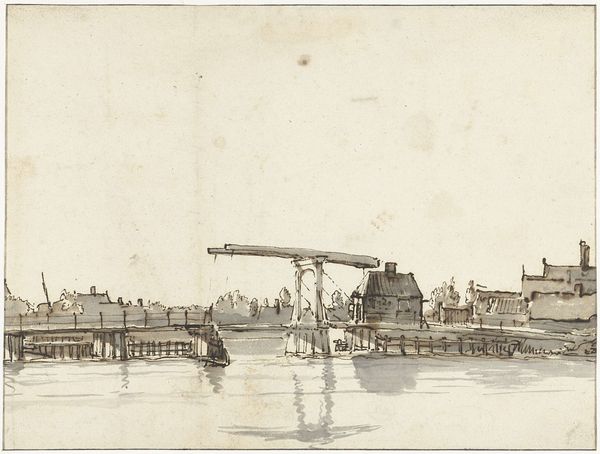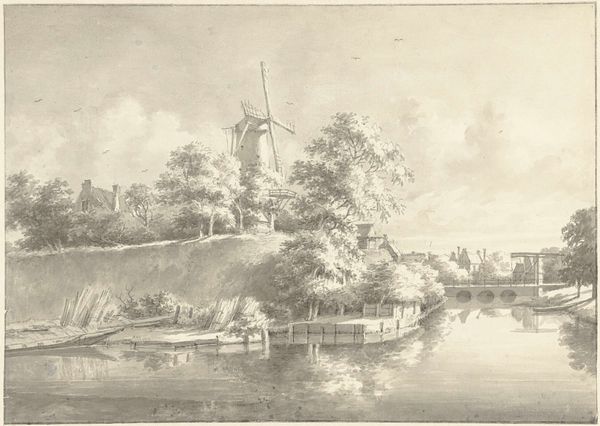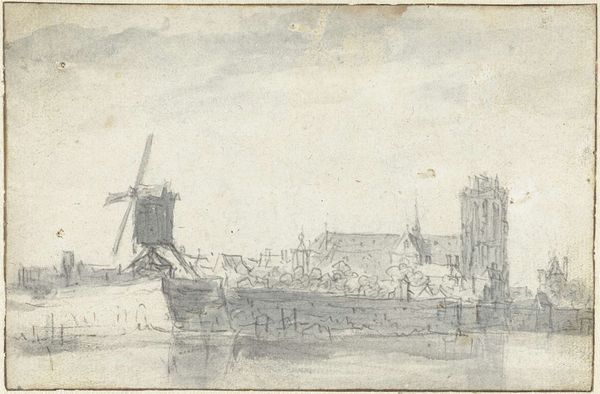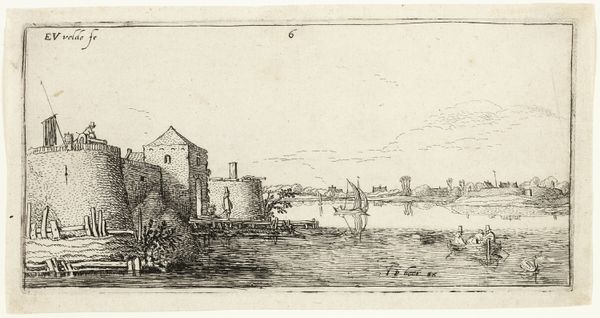
drawing, paper, watercolor
#
drawing
#
baroque
#
landscape
#
paper
#
watercolor
#
cityscape
#
watercolor
Dimensions: height 88 mm, width 156 mm
Copyright: Rijks Museum: Open Domain
Editor: This is "Het Pelikaansbolwerk te Leiden (?)" from 1649, a watercolor and pen drawing on paper by Jan de Bisschop, currently housed at the Rijksmuseum. The monochromatic brown hues give it a very subdued feel. What strikes me most is how the artist renders such a monumental subject, a city fortification, using what appear to be such simple and modest materials. What do you see in this piece? Curator: Well, for me, the first thing that jumps out is the tension between the depicted subject matter – a symbol of power and control, the fortification – and the medium, watercolor on paper. What does it mean to depict a solid, imposing structure with such a delicate and inherently 'unstable' material? De Bisschop’s choice actively challenges notions of permanence and strength. Consider also, the production of watercolors in the 17th century. How accessible would this have been? Editor: I hadn't considered the implications of watercolor in that context. It sounds like you are saying the seemingly simple act of choosing a material inherently comments on social hierarchies, wealth, and even perhaps challenges traditional power structures. Curator: Precisely. Think about the labor involved too - grinding pigments, preparing the paper, and the skill needed to render the scene. Was this artwork intended for display in the public or private consumption? Who would have commissioned it, and why choose a drawing over, say, an oil painting? The answers could reveal much about its original function and its role in the art market of the time. How does viewing the piece today affect your perception? Editor: Knowing more about the materials and production definitely changes things. It highlights the artist's choices and the economic context that shaped those choices, offering an interesting tension between the subject, medium and time it was created in. Curator: Agreed. Paying attention to those material realities really opens up new avenues of interpretation. It's not just a pretty landscape; it's a historical document embedded with social meaning.
Comments
No comments
Be the first to comment and join the conversation on the ultimate creative platform.
